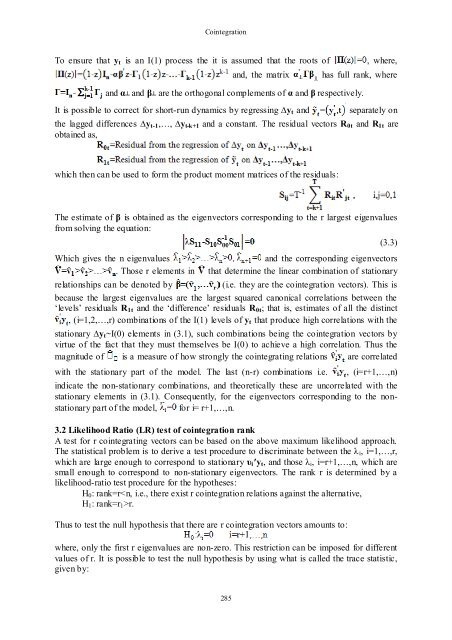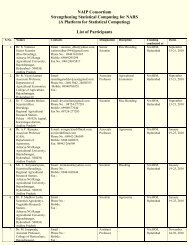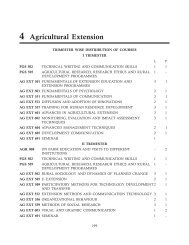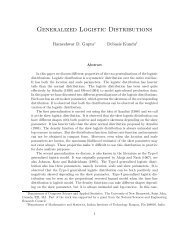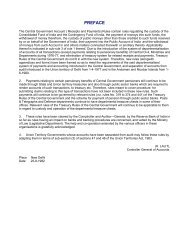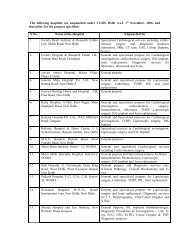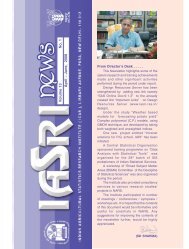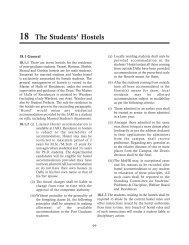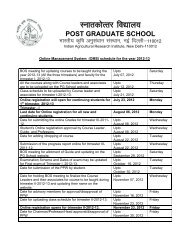COINTEGRATION - IASRI
COINTEGRATION - IASRI
COINTEGRATION - IASRI
Create successful ePaper yourself
Turn your PDF publications into a flip-book with our unique Google optimized e-Paper software.
Cointegration<br />
To ensure that y t is an I(1) process the it is assumed that the roots of<br />
and, the matrix<br />
, where,<br />
has full rank, where<br />
and α ┴ and β ┴ are the orthogonal complements of α and β respectively.<br />
It is possible to correct for short-run dynamics by regressing ∆y t and<br />
separately on<br />
the lagged differences ∆y t-1 ,…, ∆y t-k+1 and a constant. The residual vectors R 0t and R 1t are<br />
obtained as,<br />
which then can be used to form the product moment matrices of the residuals:<br />
The estimate of β is obtained as the eigenvectors corresponding to the r largest eigenvalues<br />
from solving the equation:<br />
Which gives the n eigenvalues<br />
and the corresponding eigenvectors<br />
. Those r elements in that determine the linear combination of stationary<br />
relationships can be denoted by<br />
(i.e. they are the cointegration vectors). This is<br />
because the largest eigenvalues are the largest squared canonical correlations between the<br />
‘levels’ residuals R 1t and the ‘difference’ residuals R 0t ; that is, estimates of all the distinct<br />
, (i=1,2,…,r) combinations of the I(1) levels of y t that produce high correlations with the<br />
stationary ∆y t ~I(0) elements in (3.1), such combinations being the cointegration vectors by<br />
virtue of the fact that they must themselves be I(0) to achieve a high correlation. Thus the<br />
magnitude of is a measure of how strongly the cointegrating relations are correlated<br />
with the stationary part of the model. The last (n-r) combinations i.e.<br />
(3.3)<br />
, (i=r+1,…,n)<br />
indicate the non-stationary combinations, and theoretically these are uncorrelated with the<br />
stationary elements in (3.1). Consequently, for the eigenvectors corresponding to the nonstationary<br />
part of the model, for i= r+1,…,n.<br />
3.2 Likelihood Ratio (LR) test of cointegration rank<br />
A test for r cointegrating vectors can be based on the above maximum likelihood approach.<br />
The statistical problem is to derive a test procedure to discriminate between the λ i , i=1,…,r,<br />
which are large enough to correspond to stationary υ i ′y t , and those λ i , i=r+1,…,n, which are<br />
small enough to correspond to non-stationary eigenvectors. The rank r is determined by a<br />
likelihood-ratio test procedure for the hypotheses:<br />
H 0 : rank=rr.<br />
Thus to test the null hypothesis that there are r cointegration vectors amounts to:<br />
where, only the first r eigenvalues are non-zero. This restriction can be imposed for different<br />
values of r. It is possible to test the null hypothesis by using what is called the trace statistic,<br />
given by:<br />
285


